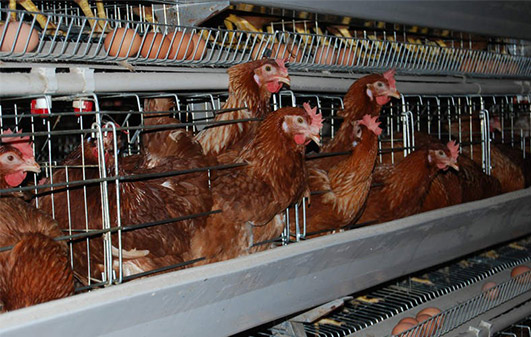How to Manage Laying Hens Near egg Production Peak?
For chicken farmers, the peak period of egg production will always be encountered at some stage of the year. Under normal circumstances, laying hens begin their pre-production period from the age of 16 weeks, and enter the peak of laying eggs at the age of 25 weeks. Whether the feeding and management status during the peak period of laying hens meets the requirements of chicken growth and egg production will have a great influence on the egg production during the entire production period. Therefore, for chicken farmers, it is very important to manage the layer chickens during production.

It is advisable to complete the laying of the laying hens before the age of 18 weeks in order to make the chickens familiar with the environment as soon as possible. In order to adapt to the increase of chicken body weight, growth of the reproductive system and the demand for calcium, the laying hens can be fed at the age of 18 weeks and the culmination at the age of 20 weeks. The most suitable temperature for laying hens is 13°C~23°C. In winter, it is better to keep above 10°C. In summer, it is better to keep below 30°C. Maintain indoor air circulation and prevent various noises. Keep the environment and feeding, drinking, lighting and other stability.
How to Know The State of the Chicken Through Chicken Drinking Amount?
Water is an important source of life. It can promote the metabolic activity of chickens. It is an invisible important role. Usually, it can affect the growth rate of chickens, egg production rate, and whether it is healthy. Insufficient drinking water can cause the chicken's skin to dry up, the muscle stomach's inner layer to become soft or mushy, and when it is severe, it will dehydrate and die.

It is suggested that each house must be equipped with an electronic water meter and connected with the controller of the house so that it can monitor the daily drinking water situation, as well as the amount of drinking water during a certain time of the day. Good chicken equipment is equipped with a water meter on each water line, which can easily monitor the amount of water consumed by each flock in the house. We should collect and analyze this information every day to help improve the production performance of the flock. Take preventive measures. Drinking water nipples (the number of eggs and chickens and the amount of water output, the diameter of the water pipeline, etc., will all affect the amount of water the chicken drinks. Large-scale chicken farms must pay attention to the effects of too fine a drinking water regulator inlet line.
